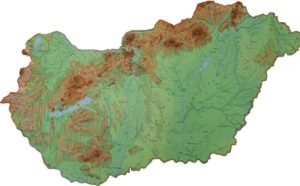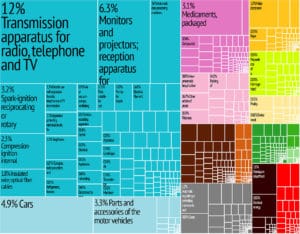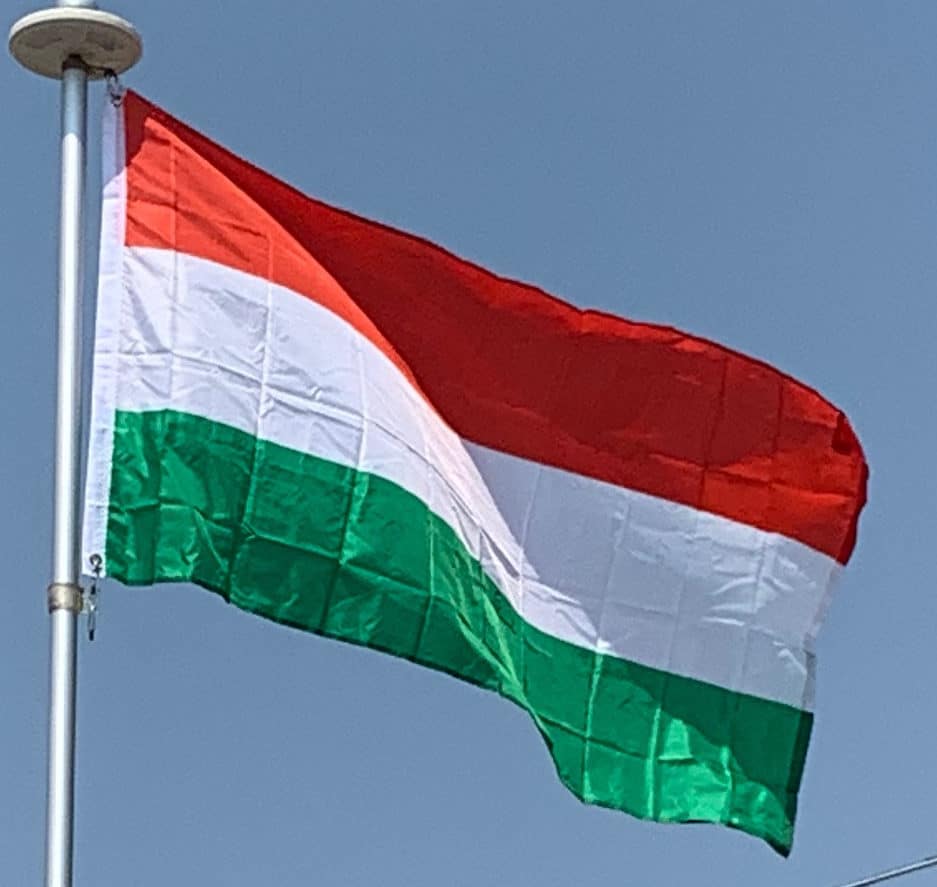
Transdanubia, which stretches westward from the center of the country toward Austria, is a primarily hilly region with a terrain varied by low mountains. These include the very eastern stretch of the Alps, Alpokalja, in the west of the country, the Transdanubian Mountains in the central region of Transdanubia, and the Mecsek Mountains and Villány Mountains in the south. The highest point of the area is the Írott-kő in the Alps, at 882 metres (2,894 ft). The Little Hungarian Plain (Kisalföld) is found in northern Transdanubia. Lake Balaton and Lake Hévíz, the largest lake in Central Europe and the largest thermal lake in the world, respectively, are in Transdanubia as well.

The Duna-Tisza köze and Tiszántúl are characterized mainly by the Great Hungarian Plain (Alföld), which stretches across most of the eastern and southeastern areas of the country. To the north of the Plain are the foothills of the Carpathians in a wide band near the Slovakian border. The Kékes at 1,014 m or 3,327 ft is the tallest mountain in Hungary and is found here.
Economy:
Hungary is an OECD high-income mixed economy with very high human development index and skilled labour force with the 16th lowest income inequality in the world. Furthermore, it is the 9th most complex economy according to the Economic Complexity Index. The Hungarian is the 57th-largest economy in the world (out of 188 countries measured by IMF) with $265.037 billion output, and ranks 49th in the world in terms of GDP per capita measured by purchasing power parity. Hungary is an export-oriented market economy with a heavy emphasis on foreign trade, thus the country is the 36th largest export economy in the world. The country has more than $100 billion export in 2015 with high, $9.003 billion trade surplus, of which 79% went to the EU and 21% was extra-EU trade. Hungary has a more than 80% privately owned economy with 39,1% overall taxation, which provides the basis for the country’s welfare economy. Hungary continues to be one of the leading nations for attracting foreign direct investment in Central and Eastern Europe, the inward FDI in the country was $119.8 billion in 2015, while Hungary invests more than $50 billion abroad. Major industries include food processing, pharmaceuticals, motor vehicles, information technology, chemicals, metallurgy, machinery, electrical goods, and tourism (in 2014 Hungary welcomed 12.1 million international tourists). Hungary is the largest electronics producer in Central and Eastern Europe. Electronics manufacturing and research are among the main drivers of innovation and economic growth in the country. In the past 20 years Hungary has also grown into a major center for mobile technology, information security, and related hardware research.

Large Hungarian companies are included in the BUX, the Hungarian stock market index listed on Budapest Stock Exchange. Well-known companies include the Fortune Global 500 firm MOL Group, the OTP Bank, Gedeon Richter Plc., Magyar Telekom, CIG Pannonia, FHB Bank, Zwack Unicum and more. Besides this Hungary has a large portion of specialised small and medium enterprise, for example a significant number of automotive suppliers and technology start ups among others.
